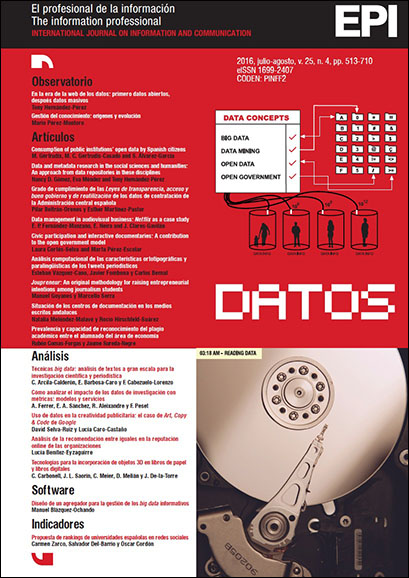Computational analysis of the orthotypographic and paralinguistic characteristics of journalistic tweets
DOI:
https://doi.org/10.3145/epi.2016.jul.08Keywords:
Digital journalism, Twitter, Orthotypography, Paralinguistics, Computational linguistics, Audiovisual communication, Digital languageAbstract
The main orthotypographic and paralinguistic characteristics of journalistic tweets using a sample of ten of the most media active Spanish journalists in the network of microblogging Twitter are analyzed. Through a research methodology based on the computer-mediated discourse of computational linguistics and statistical processing of digital messages, 178 journalistic tweets are analyzed using computational linguistics techniques (tokenization and lemmatization) and statistical processing of digital messages (inferential statistics). The results show that the orthotypographic elements with greater representation are the quotes and suspension points in tweets of average length not exceeding 100 characters. Also, the most significant paralinguistic elements are the hashtags, ats, and images in tweets with a low density of words (9.07%).
Downloads
Downloads
Published
How to Cite
Issue
Section
License
Dissemination conditions of the articles once they are published
Authors can freely disseminate their articles on websites, social networks and repositories
However, the following conditions must be respected:
- Only the editorial version should be made public. Please do not publish preprints, postprints or proofs.
- Along with this copy, a specific mention of the publication in which the text has appeared must be included, also adding a clickable link to the URL: http://www.profesionaldelainformacion.com
- Only the final editorial version should be made public. Please do not publish preprints, postprints or proofs.
- Along with that copy, a specific mention of the publication in which the text has appeared must be included, also adding a clickable link to the URL: http://revista.profesionaldelainformacion.com
Profesional de la información journal offers the articles in open access with a Creative Commons BY license.




